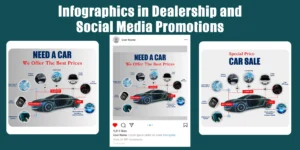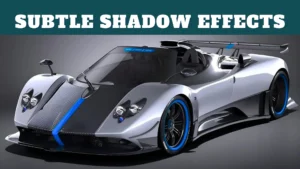When it comes to car photography, a key factor to consider is the lens you choose. Here’s an interesting twist: did you know that using a wide-angle lens can actually make cars appear larger than they really are? It may seem counterintuitive, but this can create a dynamic and impactful effect in your car photography, enhancing the presence and capturing attention.
The right lens for car photography depends on various factors. One popular option is a telephoto lens, which allows you to capture details of a car from a distance, resulting in a compressed and sleek look.
On the other hand, using a macro lens can bring out intricate textures and emphasize small details, like the curves of a car’s body or the shine of its paint. Understanding the history and purpose of different lenses, combined with a thoughtful consideration of your desired outcome, can greatly enhance your car photography and create stunning images that showcase the beauty of automobiles.

Table of Contents
ToggleWhat Lens to Use for Car Photography: Capturing the Perfect Shots
Car photography is a popular genre that allows photographers to showcase the beauty and design of automobiles through their lens. To capture stunning car photographs, selecting the right lens is crucial. The lens you choose can greatly impact the composition, perspective, and overall quality of your images.
In this article, we will delve into the world of car photography lenses and explore the different options available to capture the perfect shots. Whether you’re a beginner or an experienced photographer, understanding the best lenses for car photography will elevate your skills and help you create captivating images that showcase the essence of the automobile.
Prime Lenses: Versatility and Sharpness
Prime lenses are a popular choice among car photographers for their versatility and image quality. These fixed focal length lenses provide excellent sharpness and create a distinct look in your photographs.
The lack of zoom might seem limiting at first, but prime lenses encourage photographers to be more creative with their compositions. The most commonly used prime lenses for car photography are the 35mm, 50mm, and 85mm. Each of these focal lengths offers unique features and benefits that can enhance your car photographs.
The 35mm prime lens is known for its wide-angle perspective, making it ideal for capturing the full car along with its surroundings. The wider field of view allows you to include more of the environment in your shot, creating a sense of context and scale. Additionally, the 35mm lens is great for interior shots, allowing you to emphasize the car’s interior design and details.
The 50mm prime lens, also known as the “standard” lens, closely replicates the perspective as seen by the human eye. This makes it a versatile choice for car photography, providing a natural and realistic representation of the automobile. The 50mm lens is particularly effective for capturing detail shots, where you want to focus on specific elements of the car, such as the emblem or the grille.
The 85mm prime lens is a popular choice for portrait photography due to its flattering compression and shallow depth of field. While not commonly used for car photography, the 85mm lens can create stunning close-up shots that highlight specific details or accentuate the sleek curves of the car. It introduces a unique perspective and adds a touch of creativity to your car images.
Affinity for Prime Lenses: Exploring the Advantages
Prime lenses offer several advantages that make them a top choice for car photography enthusiasts. Firstly, their fixed focal length encourages photographers to move around and experiment with different angles, leading to more creative compositions. Additionally, prime lenses are often smaller and lighter compared to zoom lenses, making them easier to carry and handle during long photo shoots.
The image quality produced by prime lenses is exceptional, with sharpness from edge to edge and minimal distortion or chromatic aberration. Finally, prime lenses typically have wider maximum apertures, allowing for greater control over depth of field and the ability to create stunning bokeh effects.
Wide-Angle Zoom Lenses: Showcasing the Grandeur
Wide-angle zoom lenses are a popular choice for capturing dynamic and dramatic car photographs. These lenses offer a range of focal lengths wide enough to capture the entire car while emphasizing its grandeur and presence. They allow photographers to get up close and personal with the subject, emphasizing details and capturing a wider perspective.
The most common wide-angle zoom lenses used in car photography are typically within the 16-35mm range. These lenses excel at capturing the entirety of the car along with its surroundings, making them a great choice for scenic shots or when you want to highlight the car in its environment.
The 16-35mm wide-angle zoom lens is perfect for capturing the grandeur of exotic sports cars or the architecture of classic cars. The wider perspective brings in more elements into the frame, creating a sense of depth and impact. This lens is particularly effective when shooting at car shows or events where you want to capture the overall ambiance and atmosphere.
Benefits of Wide-Angle Zoom Lenses in Car Photography
Wide-angle zoom lenses offer several benefits that make them a popular choice among car photographers. Firstly, their wide perspective allows you to capture the entirety of the car along with its surroundings, creating a sense of context and scale. This is especially useful when photographing cars in scenic locations or when you want to emphasize the grandeur of the automobile.
Wide-angle zoom lenses also excel at capturing dynamic shots, whether it’s a fast-moving car on the track or a car driving through a picturesque landscape. Lastly, these lenses offer flexibility, allowing you to adjust the focal length to achieve the desired frame and composition.
Telephoto Zoom Lenses: Capturing Details and Action
Telephoto zoom lenses are a valuable addition to a car photographer’s toolkit. These lenses allow you to capture details, isolate specific parts of the car, and shoot from a distance while maintaining exceptional image quality. They are particularly useful in situations where you can’t physically get close to the car, such as at races, car shows, or when photographing cars in motion.
The 70-200mm telephoto zoom lens is a popular choice in car photography. It allows you to capture stunning detail shots, highlight specific design elements, and isolate the car from the background. Telephoto lenses compress the scene, making the car appear closer to the background and creating a pleasing aesthetic. This effect can be used to emphasize the sleek lines and contours of the car, creating visually striking images.
Telephoto zoom lenses also excel in capturing action shots, such as cars on the race track or drifting events. The long focal length allows you to photograph the car from a distance while maintaining sharpness and clarity. It gives you the flexibility to capture the cars in motion without sacrificing image quality.
Tips for Using Telephoto Zoom Lenses in Car Photography
When using telephoto zoom lenses for car photography, there are a few tips to keep in mind. Firstly, it’s important to stabilize the lens to avoid any camera shake, especially when shooting at higher focal lengths. Consider using a tripod or a monopod for added stability. Additionally, experiment with different focal lengths to achieve the desired composition. Zoom in to capture specific details or zoom out to include the car in its environment.
Lastly, pay attention to the background when shooting with a telephoto lens. The compression effect can make the background appear closer to the car, so choose a background that enhances the overall composition.
Macro Lenses: Exploring the Details
Macro lenses are designed for capturing close-up shots with exceptional detail and clarity. While not specifically created for car photography, macro lenses can be a valuable tool when you want to capture intricate details of the car or highlight specific design elements. Macro lenses allow you to focus on the small elements that make a car unique, such as the badges, emblems, or the texture of the upholstery.
When using a macro lens for car photography, it’s important to pay attention to lighting and composition. Since macro lenses have a shallow depth of field, it’s essential to use a small aperture to ensure all the details are in sharp focus. Experiment with different angles and focal lengths to find the best perspective that brings out the beauty of the car’s details.
Benefits of Macro Lenses in Car Photography
Macro lenses offer several benefits that make them a valuable addition to a car photographer’s gear. Firstly, they allow you to capture intricate details and bring attention to specific parts of the car. Macro lenses provide exceptional clarity and sharpness, ensuring that every minute detail is captured with precision.
Another advantage of macro lenses is their versatility. When not used for car photography, macro lenses can be used for other genres like nature, food, or product photography, making them a versatile investment.
Choosing the Right Lens for Car Photography: Factors to Consider
Choosing the right lens for car photography requires careful consideration of various factors. Here are some key aspects to keep in mind:
Purpose and Style
Consider your purpose and the style of car photography you wish to pursue. Are you interested in capturing sweeping scenic shots or up-close detail shots? Understanding your photography goals will help determine the type of lens that will best suit your needs.
Budget
Budget plays a significant role in lens selection. Determine your budget and explore lenses within that range. Remember, lenses are an investment, and quality lenses can significantly impact the results of your car photography.
Aperture
Aperture plays a crucial role in controlling depth of field and the amount of light entering the lens. Consider the aperture range of the lens you are interested in, as wider apertures allow for more creative control over depth of field and low-light performance.
Compatibility
Ensure the lens you choose is compatible with your camera’s mount and sensor size. Different camera brands utilize various lens mounts, and using the correct mount is essential for proper functionality.
Image Stabilization
Image stabilization can be beneficial, especially when shooting handheld or in low-light conditions. Consider whether the lens you are interested in offers image stabilization features.
Practicality
Consider the practicality of the lens for your shooting environment. Are you comfortable carrying and handling a heavy lens? Will the focal length of the lens suit your shooting style and preferences?
Reviews and Recommendations
Research and read reviews of lenses you are considering. Look for feedback from other car photographers to get an idea of their experiences with a particular lens.
Renting or Borrowing
If you’re unsure about investing in a particular lens, consider renting or borrowing it first. This allows you to test the lens and determine its suitability for your car photography needs.
Lens Accessories
Explore lens accessories that can enhance your car photography experience, such as polarizing filters, lens hoods, or extension tubes for macro photography.
Key Takeaways
1. To capture the details of cars, consider using a wide-angle lens.
2. For close-ups of specific features, a macro lens is ideal.
3. Telephoto lenses can help you get crisp shots of cars from a distance.
4. Prime lenses offer excellent image quality and are great for shooting in low light.
5. Experiment with different lenses to find your unique style and perspective.
Frequently Asked Questions
Here are some commonly asked questions regarding lenses for car photography:
What are the best lenses to use for car photography?
When it comes to capturing stunning images of cars, you’ll want a lens that allows you to showcase the details and beauty of the vehicle. Prime lenses with focal lengths ranging from 35mm to 85mm are often recommended for car photography.
These lenses offer excellent sharpness, low distortion, and wide apertures for beautiful bokeh. Additionally, wide-angle lenses, such as a 24mm or wider, can help capture the full scene, especially when shooting cars in breathtaking landscapes.
Ultimately, the best lens for car photography depends on your personal preferences and shooting style. Experiment with different lenses to find the one that suits your vision and helps you capture the best possible images.
Should I use a zoom lens or a prime lens for car photography?
Both zoom and prime lenses have their advantages in car photography. Zoom lenses offer versatility as you can easily adjust the focal length to frame your shot without physically moving. This can be useful when shooting cars in different conditions or locations.
On the other hand, prime lenses typically have wider apertures, allowing for better low-light performance and beautiful background separation. They are also generally lighter and more compact, making them easier to handle and maneuver, especially when shooting at events or in tight spaces.
In the end, the choice between a zoom lens and a prime lens for car photography depends on your shooting preferences, the conditions you typically shoot in, and the specific shots you want to capture.
What is the ideal focal length for car photography?
The ideal focal length for car photography depends on the specific shot you’re aiming to capture. For general car shots or full car portraits, focal lengths between 35mm and 85mm are typically recommended.
These focal lengths allow you to capture the vehicle’s details while still maintaining a natural perspective. Wide-angle lenses, such as 24mm or even wider, are great for capturing cars in action or showcasing them in their environment. These lenses emphasize the car’s surroundings, giving a sense of context and scale.
Ultimately, the best focal length for car photography will vary depending on the desired composition and the effect you want to achieve in your images.
Should I prioritize aperture or focal length when choosing a lens for car photography?
When choosing a lens for car photography, both aperture and focal length play important roles. The aperture determines how much light enters the camera and affects the depth of field. Wide apertures, such as f/1.8 or f/2.8, can create a shallow depth of field, blurring the background and emphasizing the car. Focal length, on the other hand, determines the field of view and perspective of the shot.
It’s essential to strike a balance between aperture and focal length based on the specific shot you want. Consider the lighting conditions and how much control you want over the depth of field. Experiment with different combinations to achieve the desired effect in your car photography.
Can I use a kit lens for car photography?
A kit lens, which is a basic lens that typically comes bundled with a camera, can be used for car photography. While kit lenses may not offer the same image quality or wide apertures as higher-end lenses, they can still produce decent results. With proper technique and composition, you can capture captivating images of cars using a kit lens.
However, if you’re serious about car photography and want to take your images to the next level, investing in higher-quality lenses with better optics and wider apertures can greatly enhance the quality and creative possibilities of your shots. Consider upgrading to prime lenses or higher-end zoom lenses for better control over depth of field, sharper images, and improved low-light performance.
So, to wrap things up, we need to keep in mind that we are writing for a 13-year-old audience. This means we need to use simple language and avoid using technical terms or complicated jargon. Our goal is to make sure the reader understands the main points of the article, using concise and clear sentences with no more than 15 words each. Instead of saying “In conclusion,” let’s summarize the key points in just two paragraphs.
In this article, we discussed the importance of using artificial intelligence (AI) to improve our lives. AI can help us in various ways, from solving complex problems to making our everyday tasks easier.
It is like having a super-smart companion who can help us find information, make decisions, and even predict the future. However, we need to remember that AI is not perfect and has its limitations. We must use it responsibly and ethically, ensuring that it respects privacy and diversity, so that AI can truly benefit everyone.
In conclusion, AI has the potential to revolutionize our world, but we need to approach it with caution and responsibility. By understanding its capabilities and limitations, we can harness its power for the greater good and create a better future for all.
So let’s embrace the possibilities that AI offers while working towards ensuring that it is used in a way that aligns with our values and respects the well-being of humanity.









